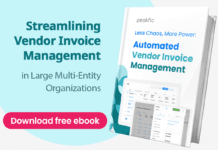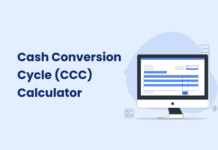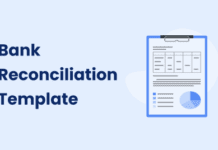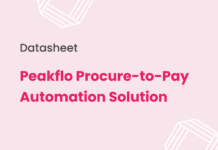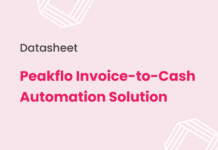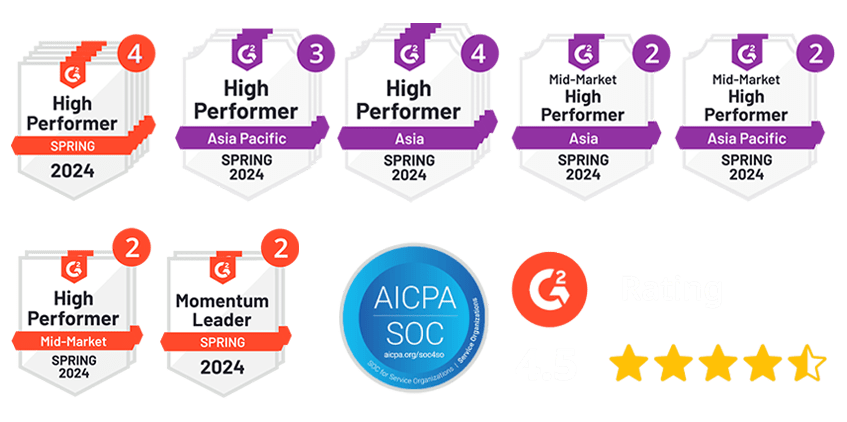Every international transaction comes with a cost, but do you know how much your business is paying in cross-border fees? These hidden charges can quietly eat into your margins, making global payments more expensive than you expect.
If your company processes payments from international customers, chances are you have seen these fees on your statements. But why are they there? Who bears the cost—you, the customer, or both? More importantly, can you reduce or eliminate them?
Understanding how a cross-border fee works is not just about cutting costs. It is about making smarter payment decisions that give your business a competitive edge. This guide will break it all down in a way that is easy to grasp—no financial jargon, just clear insights.
Stay with us, and by the end of this blog, you will know how to optimize your transactions, reduce unnecessary charges, and keep more of your revenue where it belongs—inside your business.
Overview of Cross-Border Fees
Cross border fee is a charge that kicks in when a customer’s credit card is issued in a different country than the vendor’s payment processor.
Card networks like Visa and Mastercard apply these fees to cover the extra costs of handling cross-border transactions. The percentage varies depending on currency conversion, the issuing bank, and the payment processor.
For many businesses, these fees go unnoticed—until they add up. If your company handles a high volume of global transactions, even a small percentage can lead to thousands in extra costs over time.
Let us simplify the concept using an example scenario.
Suppose you run a software company in the U.S.. A customer from Canada subscribes to your service using a Canadian-issued credit card. Even though the transaction happens online, the card network classifies it as cross-border and applies a fee.
Most businesses absorb this cost as part of their operations, but some pass it on to the customer as an extra charge. If you are not monitoring these fees, they can quietly eat into your profit margins.
General Information About Cross-Border Fee Distribution
When a business processes an international payment, someone has to cover the cross-border fee—but who exactly? The answer depends on the payment setup, agreements with payment processors, and pricing strategy.
1. The Vendor Usually Pays
In most cases, the vendor absorbs the cost. When a customer purchases using a foreign-issued card, the fee is deducted from the vendor’s payout before the funds settle in their account. This is the default setup for most businesses using credit card payment processors like Visa and Mastercard.
For enterprises handling high volumes of global transactions, these fees can quickly add up, cutting profit margins without immediately noticing.
2. Can the Cost Be Passed to the Customer?
Some businesses offset these costs by passing them to the customer in one of two ways:
- Surcharges: A small percentage is added when a foreign card is used at checkout.
- Higher Prices for International Transactions: The business adjusts its pricing model to compensate for the fee.
However, this approach comes with risks. Customers may abandon their purchase if they see unexpected charges, leading to lost sales. For enterprises, balancing cost recovery with a frictionless customer experience is key.
3. What About Payment Processors?
Payment processors do not pay the cross-border fee—they apply it. Each processor has its pricing structure, which can either bundle the fee into their overall processing rate or list it as a separate charge. Some enterprise-level businesses can negotiate lower rates or find providers offering local acquiring solutions to reduce these costs.
What Factors Determine Cross-Border Fees?
Cross border fees are not the same for every transaction. They change based on who processes the payment, where the customer’s bank is located, and whether currency conversion is needed. Businesses that rely on international payments need to understand these fees to avoid unnecessary costs. Let us check what determines cross border fees.
1. Card Network Fees
Visa, Mastercard, and other card networks set their cross-border fee rates. These fees apply when a card from one country is used to pay a vendor in another country.
2. Where the Customer’s Bank Is Located
A transaction is considered cross-border when the customer’s bank is in a different country than the vendor’s payment processor. Even if both use the same currency, the payment may still trigger a cross-border fee.
3. Currency Conversion Costs
If the customer pays in a different currency, the transaction requires conversion. This adds a foreign exchange (FX) fee, which increases the total cost for the vendor. Some payment processors set their exchange rates, leading to higher charges.
4. Payment Processor Charges
Payment processors do not just pass on the card network’s fee. Many add their markups, increasing costs. Some processors combine all international fees into one rate, while others list them separately, making it harder to track what businesses pay.
5. Industry and Transaction Type
Some industries pay more cross-border fees than others. Businesses in sectors like travel, luxury goods, and online services often face higher fees due to increased fraud risks. The way a payment is processed also matters. Online, in-person, and recurring transactions may have different fee structures.
Example of Cross Border Fees in Action:
A U.S.-based software company sells a subscription to a customer in France. Here is what happens behind the scenes:
- The customer pays in euros, but the vendor operates in U.S. dollars.
- The payment processor converts the currency and applies a foreign exchange fee.
- Since the customer’s bank is in France and the vendor’s processor is in the U.S., a cross-border fee is added.
- The total fee deducted includes the card network’s charge, the payment processor’s markup, and the currency conversion fee.
Hidden Costs Beyond the Cross-Border Fee
Cross border fees are not the only cost businesses face when processing international payments. Many hidden charges go unnoticed, but they chip away at profit margins over time. These extra costs come from currency conversion, bank fees, and payment processor markups. If businesses do not track them, they may end up paying far more than expected on each transaction. So, let us take a look at the few key things that you need to check.
1. Currency Conversion Fees
When a customer pays in a different currency, the payment processor must convert it into the vendor’s currency. This process comes with a fee.
Most businesses assume the exchange rate is fair, but many processors set their rates—higher than the market rate. This difference creates an undetected markup, adding to the overall cost. The larger the transaction, the bigger the impact.
For example, if a vendor in the U.S. receives a payment in euros, the payment processor converts it to U.S. dollars at their own exchange rate. Even if the cross border fee is small, the exchange rate markup can make the transaction more expensive.
2. Bank Processing Fees
Banks charge additional fees when handling international transactions. These costs are separate from card network fees and vary depending on the bank’s policies and the countries involved.
Common bank-related charges include:
- Wire Transfer Fees – If funds are sent via international wire transfer, banks charge a flat fee or a percentage of the transaction.
- Intermediary Bank Fees – Some payments pass through multiple banks before reaching the vendor, with each bank deducting a fee.
- Receiving Bank Charges – Even if a vendor does not send the payment, their bank may charge a fee just for receiving the funds.
These bank fees are not always visible upfront, making it harder for businesses to track the true cost of international payments.
3. Payment Processor Markups
Payment processors set their pricing models for handling cross-border transactions. Many use tiered pricing, where the final cost depends on factors like industry risk, transaction size, and processing method.
Some processors bundle all fees into one rate, while others list cross-border fees, currency conversion fees, and processing charges separately. This lack of transparency makes it difficult for businesses to know exactly how much they are paying.
How to Reduce Cross-Border Fees?
Cross-border fees increase the cost of doing business internationally. But there are ways to lower them. The right payment setup can help companies to avoid extra charges and keep more of their revenue. Here is how you can plan this.
1. Use Local Payment Processing
Many businesses pay cross-border fees because their payment processor is in a different country than their customers. This happens when a U.S. business accepts payments from Europe but processes them through a U.S.-based system.
One solution is to use local acquiring. This means setting up payment processing in the same country as the customer’s bank. If a U.S. company has many customers in Canada, using a Canadian payment processor can prevent cross-border fees.
Large enterprises often set up local processing in multiple countries to reduce unnecessary fees.
2. Accept Payments in Multiple Currencies
When a business only accepts payments in one currency, it forces the customer’s bank to convert the payment. This adds currency conversion fees, which are often higher than expected.
A better option is to accept multiple currencies. Businesses can:
- Let customers pay in their local currency instead of converting it.
- Use a multi-currency account to hold different currencies and settle transactions at better exchange rates.
This helps businesses avoid conversion costs and give customers a better experience.
3. Negotiate Lower Fees with Payment Processors
Many businesses accept the standard cross-border fees without realizing they can negotiate better rates. Payment processors offer lower rates to high-volume businesses that bring in more transactions.
To get lower fees, businesses can:
- Compare different processors to find one with better international rates.
- Ask for custom pricing based on transaction volume.
- Look for processors that support local acquiring to avoid cross-border fees.
A small percentage reduction in fees can lead to big savings over time.
4. Choose a Payment Processor with Transparent Fees
Not all payment processors charge the same cross-border fees. Some bundle fees together, making it hard to see what businesses are paying. Others add extra markups on top of the card network’s base fees.
A business should look for a processor that:
- Offers clear, upfront pricing with no hidden charges.
- Provides local acquiring options for major international markets.
- Uses fair exchange rates for currency conversion.
Switching to the right provider can cut costs without affecting payment reliability.
5. Optimize Billing and Payment Methods
The way a business collects payments can also impact cross-border fees. Some strategies that help reduce costs include:
- Using bank transfers instead of credit cards for large transactions to avoid network fees.
- Charging customers less frequently by billing in larger amounts to reduce the number of transactions.
- Encouraging payments through local methods like direct bank transfers or digital wallets.
How Peakflo Helps Businesses Reduce Cross-Border Fees?
Are you paying more than you should on international transactions? Cross-border fees add up fast, but the right payment setup can help you keep more of your money.
Peakflo makes global payments cheaper and smoother by offering local disbursements, multi-currency support, and smart payment routing.
Here’s how it works:
1. Automated Currency Conversion
Peakflo takes the stress out of currency conversion. It uses real-time exchange rates to automatically convert currencies, saving you time and minimizing the chance of errors. You no longer have to worry about fluctuating rates or spend hours managing exchanges manually. This automation makes international payments more reliable and cost-effective.
2. Fast, Secure Wallet Top-ups
With Peakflo, adding funds to your multi-currency wallet is quick and simple. Just top up using your preferred payment method, and Peakflo takes care of the rest—processing payments and handling all the details.
3. Direct Payments from Peakflo
Forget about juggling multiple systems. You can pay bills directly within Peakflo, speeding up your cross-border payments. It ensures everything is processed securely and quickly—without needing any extra steps or manual work.
4. Automated Payment Workflows
Peakflo automates your payment approval process. It lets you create custom workflows that can automatically handle approvals based on payment amounts or departments. No more delays or confusion about who needs to approve what. This adds an extra layer of security and efficiency for cross-border payments.
5. Complete Visibility and Control
With Peakflo, you get full visibility into the status of all your payments in one place. You can easily track whether a payment is successful, failed, or still pending. And if something goes wrong, you’ll be notified right away—so you can take action immediately.
6. No More Manual Reconciliation
Peakflo syncs with your ERP or accounting software, making reconciliation effortless. Say goodbye to sifting through paperwork or manually entering payment data. Peakflo handles the heavy lifting, ensuring your records are always accurate and up-to-date.
7. Save Time, Cut Costs
By processing 200 invoices, Peakflo saves you 9 hours of manual work each month. This not only gives your finance team more time but also helps you cut down on the overhead costs tied to processing cross-border payments. With Peakflo, you can handle more payments in less time—without worrying about hidden fees or mistakes.
Conclusion
Cross-border fees might seem small, but they add up fast. If businesses do not track them, they can slowly eat into profits. The good news? There are ways to reduce these fees and keep more of your money. Local payment processing, multi-currency accounts, and smart routing can help lower costs and make transactions more efficient.
Peakflo makes this easier. It helps businesses cut unnecessary fees, speed up global payments, and gain full visibility into transaction costs.
See how it works. Take a free demo tour today and start saving on international payments!




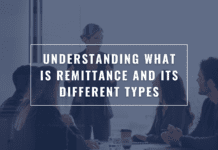




![Why AI Sales Calls Are Making Good Sales Reps Even Better [2025 Guide] ai sales calls](https://cdn-kmjmp.nitrocdn.com/YvtqmrsiHUxqerlSiZgbfzqqTARWTElr/assets/images/optimized/rev-834053b/blog.peakflo.co/wp-content/uploads/2025/09/65168cf6-3001-4733-8cbc-12d5684cf449-218x150.webp)







